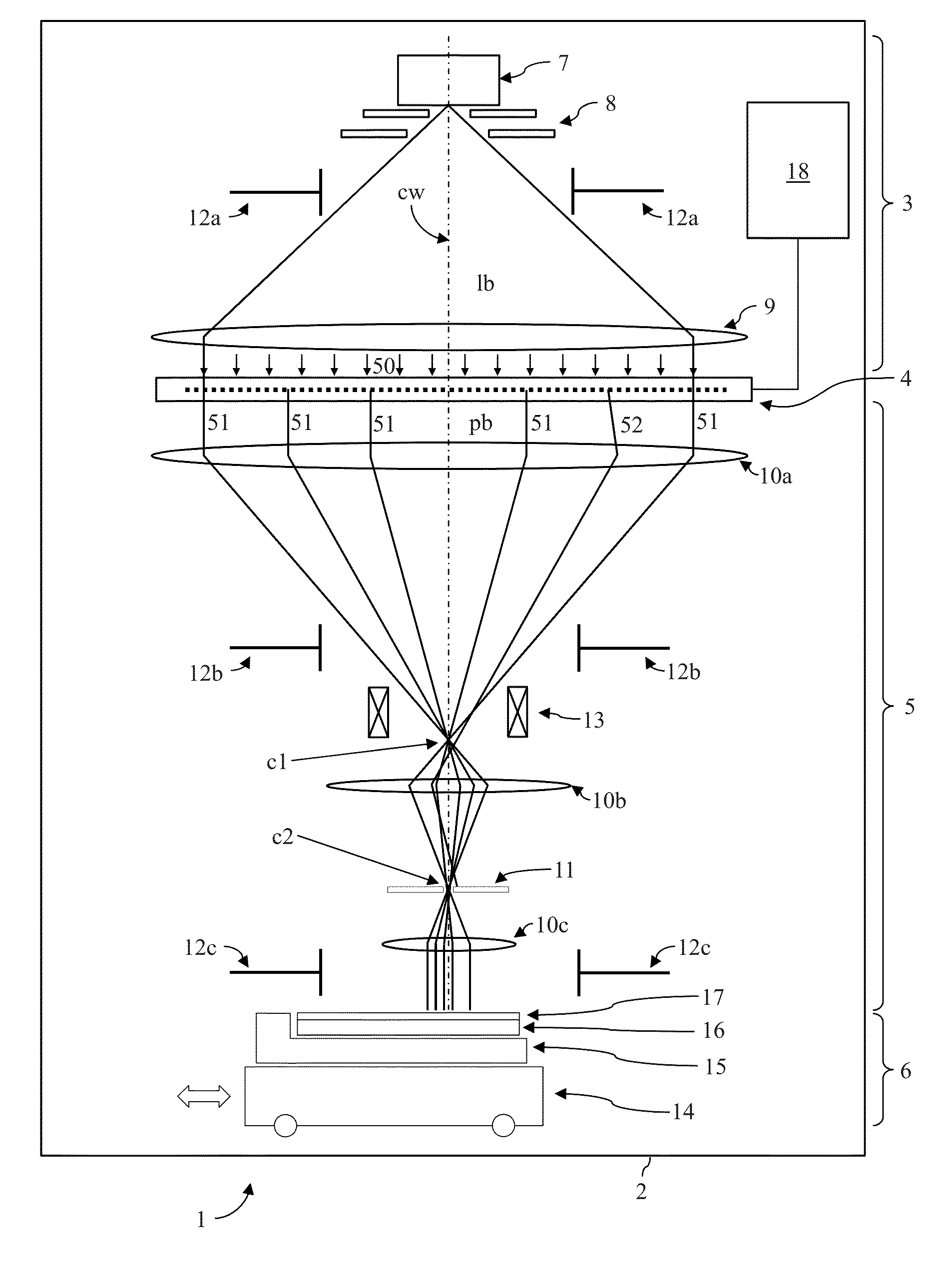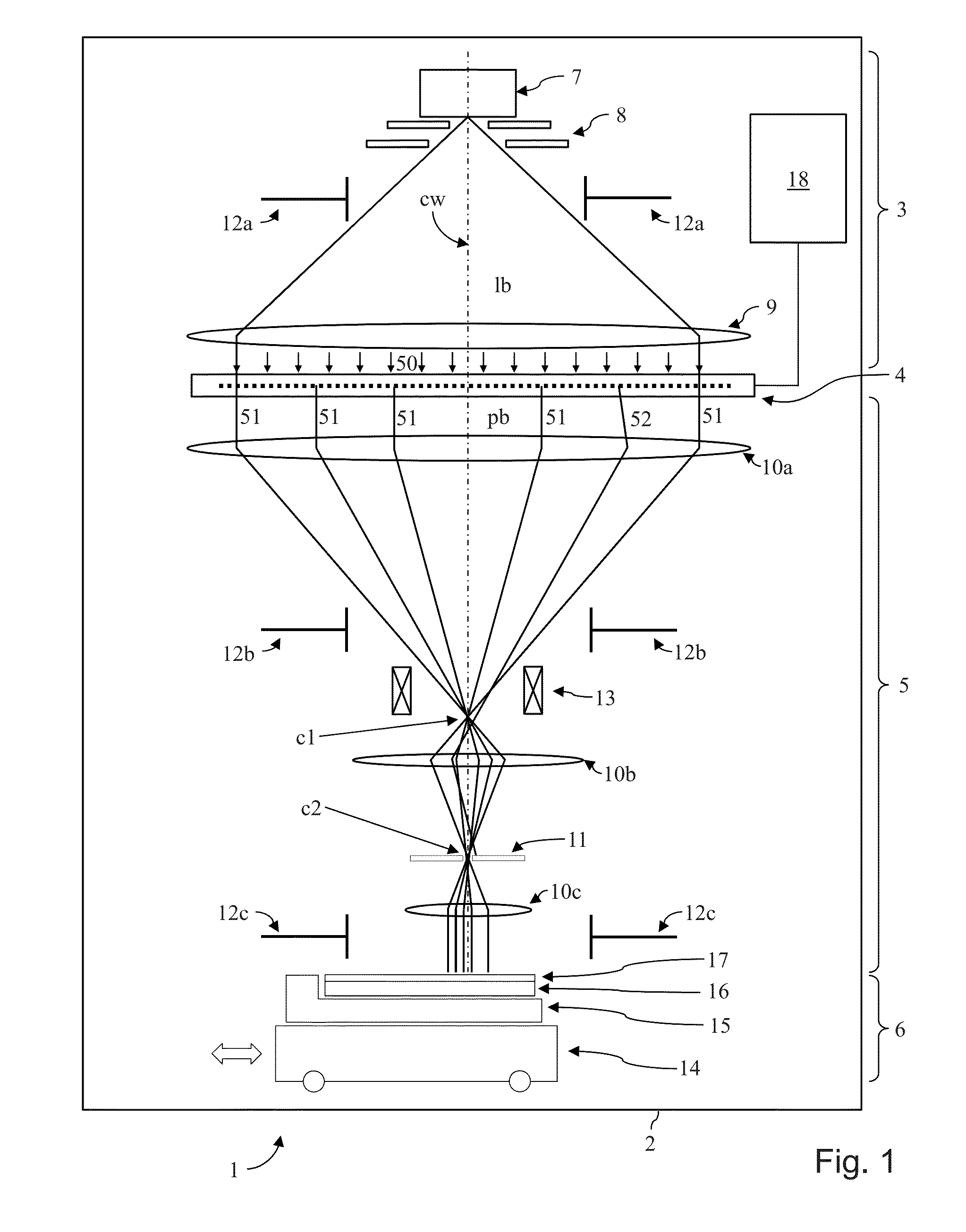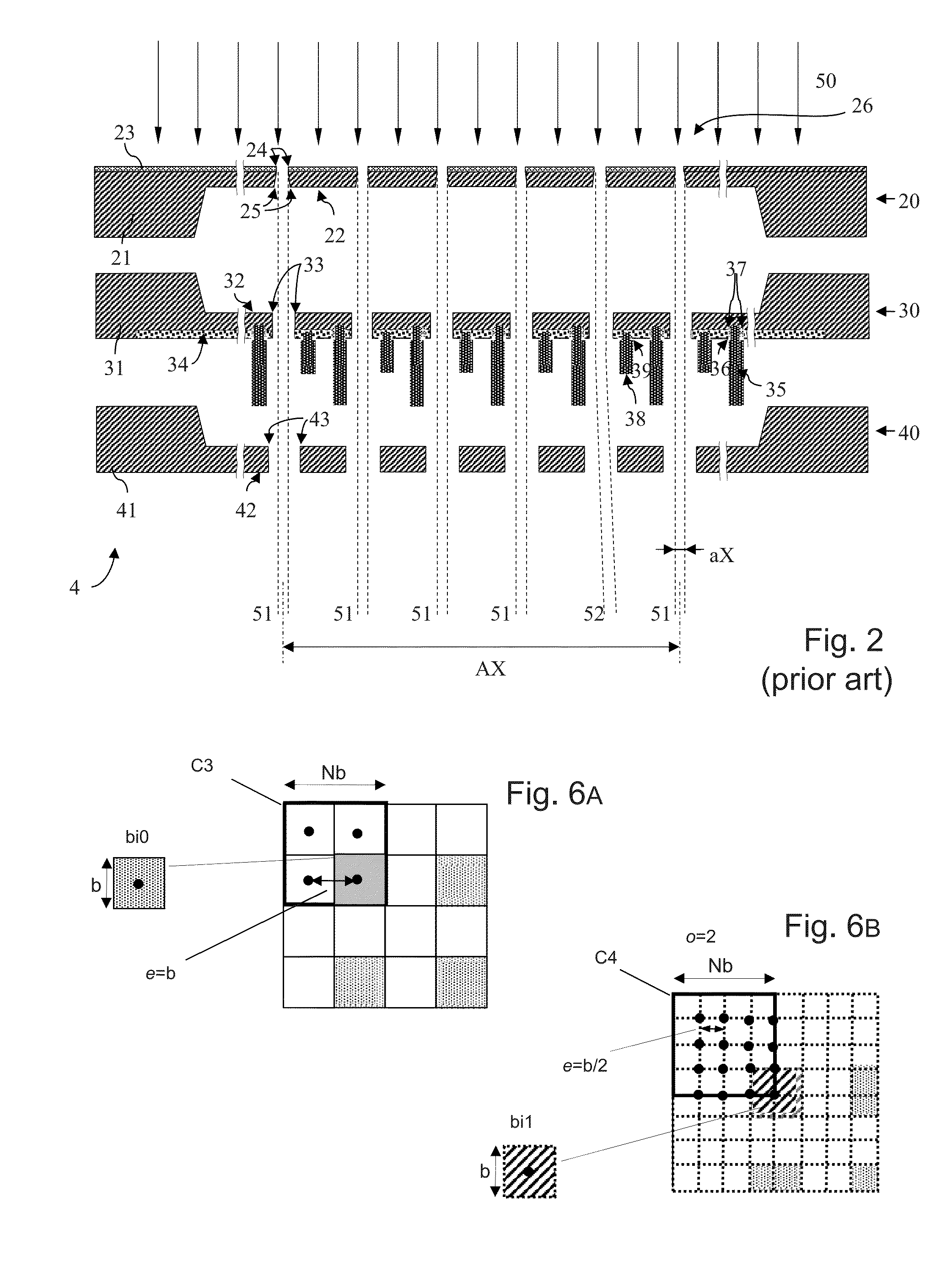Compensation of Dose Inhomogeneity Using Overlapping Exposure Spots
a multi-beam exposure and dose inhomogeneity technology, applied in the direction of electrical discharge tubes, instruments, computing, etc., can solve the problems of unavoidable influence of the dose rate of each beamlet, inability to cover time-dependent or varying effects, etc., to achieve the effect of reducing the error per dose increment, improving the compensation method, and increasing the degree of overlap
- Summary
- Abstract
- Description
- Claims
- Application Information
AI Technical Summary
Benefits of technology
Problems solved by technology
Method used
Image
Examples
Embodiment Construction
[0053]It should be appreciated that embodiments of the invention are not restricted to the embodiments discussed in the following, which merely represent suitable implementations of the invention.
Lithographic Apparatus
[0054]An overview of a lithographic apparatus as known from prior art employing the preferred embodiment of the invention is shown in FIG. 1. In the following, only those details are given as needed to disclose certain embodiments of the invention such that one of ordinary skill in the art can practice the various embodiments of the invention; for the sake of clarity, the components are not shown to size in FIG. 1. The main components of the lithography apparatus 1 are—corresponding to the direction of the lithography beam lb, pb which in this example runs vertically downward in FIG. 1—an illumination system 3, a pattern definition (PD) system 4, a projecting system 5, and a target station 6 with the substrate 16. The whole apparatus 1 is contained in a vacuum housing ...
PUM
 Login to View More
Login to View More Abstract
Description
Claims
Application Information
 Login to View More
Login to View More - R&D
- Intellectual Property
- Life Sciences
- Materials
- Tech Scout
- Unparalleled Data Quality
- Higher Quality Content
- 60% Fewer Hallucinations
Browse by: Latest US Patents, China's latest patents, Technical Efficacy Thesaurus, Application Domain, Technology Topic, Popular Technical Reports.
© 2025 PatSnap. All rights reserved.Legal|Privacy policy|Modern Slavery Act Transparency Statement|Sitemap|About US| Contact US: help@patsnap.com



